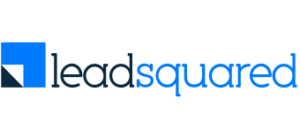
As lending grows more digital and customer expectations rise, the need for robust systems to deal with its behind-the-scenes processes has never been greater. One such system — the Loan Origination System (LOS) — plays a crucial role in transforming how loans are applied for, evaluated, and approved.
In this article, we’ll explore what a Loan Origination System is, the core stages it supports in the loan lifecycle, and the top LOS platforms helping lenders scale faster and smarter.
A Loan Origination System (LOS) is a digital tool that simplifies and automates the entire loan process, from application all the way to disbursal. It handles steps like collecting documents, verifying information, assessing credit, underwriting, making decisions, and disbursing funds.
In short, an LOS enables lenders to process loan applications quickly and accurately.
Traditionally, loan origination has been lengthy and paperwork-heavy, often involving multiple interactions with the borrower. With automated systems, this process is now much faster, smoother, and more efficient.
What is a Loan Origination System?
A Loan Origination System (LOS) is a digital tool that simplifies and automates the entire loan process, from application all the way to disbursal. It handles steps like collecting documents, verifying information, assessing credit, underwriting, making decisions, and disbursing funds.
In short, an LOS enables lenders to process loan applications quickly and accurately.
Traditionally, loan origination has been lengthy and paperwork-heavy, often involving multiple interactions with the borrower. With automated systems, this process is now much faster, smoother, and more efficient.
What does a Loan Origination System do?
Key functions of a Loan Origination System include:
1.Automated data collection
Gathers customer information through digital forms or integrations with existing databases.
2. Document verification
Checks the authenticity of submitted documents using KYC tools, AI, and digital verification.
3. Automated underwriting
Evaluates credit risk and eligibility using predefined rules and scoring models.
4. Third-party integrations
Connects with credit bureaus, KYC platforms, and payment gateways.
5. Workflow automation
Guides loan applications through configurable approval steps and task assignments.
Modern LOS platforms often make use of APIs, AI, and machine learning to enhance speed, scalability, and efficiency, making them essential for forward-thinking financial institutions.
How does loan origination work: 6 key stages
Most lenders generally follow these key steps for loan origination:
1. Pre-qualification
Also called pre-screening, pre-qualification is the first stage of the loan process. The lender checks whether the borrower meets basic eligibility criteria and verifies their identity and financial standing.
Here, borrowers typically provide their:
- Proof of identity (passport or government-issued ID)
- Employment details and income verification
- Credit score
- Bank statements and past loan records
These documents are then verified manually or using automated systems. Once approved, the borrower is then allowed to proceed with the full application.
2. Application
In this stage, the borrower formally applies for the loan.
While this step used to involve lengthy paperwork, most lenders now use digital applications via self-serve portals, websites, or mobile apps.
Application forms are often tailored to specific loan types, so the required details and form length can vary depending on the loan.
3. Application processing
After the application is submitted, the lender reviews and verifies the information. In larger banks, this can involve multiple departments and take several days to weeks.
Today, many banks use automated loan origination systems to speed up this process. These platforms can instantly process applications, flag missing or suspicious information, notify the right departments, or return the application to the borrower for corrections.
4. Underwriting
Underwriting is the next stage where the lender carefully examines the borrower’s financial information to decide how much funding can be offered and under what terms.
Lenders assess eligibility using factors such as:
- Credit scores
- Risk scores
- Existing outstanding loans
- Debt-to-income ratios
Modern loan origination systems, such as LeadSquared, automate much of this process, pulling data from multiple sources and calculating scores. This speeds up decision-making and reduces manual effort.
The following image from LeadSquared Lending CRM automated workflow explains this.
5. Credit Decision
The credit decision follows underwriting, where the lender approves or denies the loan application.
Many lenders now use loan origination systems to speed up this step. These platforms evaluate risk factors, compare scores to pre-set thresholds, and determine eligibility quickly.
6. Funding
After a final verification ensures all documents are complete and approvals are in place, the lender releases the funds to the borrower.
For most personal loans, this is a straightforward transfer. More complex loans, such as loans against property or business loans, may require additional steps like legal verifications or collateral documentation before disbursement.
What are the benefits of a loan origination system?
1. Simplified borrower onboarding
Manual data collection can be time-consuming and error prone. A loan origination system (LOS) smoothens client onboarding with digital, self-serve forms and pre-filled information to reduce effort for borrowers.
Other features offered by an LOS include:
- OTP verification for applicant authenticity
- API integrations for seamless data flow
- Centralized data storage to avoid duplicates
- Role-based access control for secure, remote access
2. Faster, more accurate credit analysis
Modern lending systems, including LOS platforms, can assess a borrower’s creditworthiness in minutes. With customer consent, these systems analyze financial data using technologies like:
- OCR to digitize documents
- Machine learning to detect patterns and anomalies
- Bank statement analysis to assess verified income, spending, and cash flow
- Alternate data sources such as utility payments or rental history for applicants with limited credit history
3. Smoother credit decisioning
After analyzing a borrower’s financial data, lenders need to make an informed credit decision. A Loan Origination System (LOS) automates this process with rule-based, consistent decisioning.
An LOS also offers:
- A 360° view of customer and loan details for faster evaluations
- Automated credit scorecards and approval recommendations
- Application of lender-specific rules to ensure consistent, compliant decisions
- Automatic Credit Assessment Memo (CAM) generation for traceability
- Seamless routing logic to auto-approve low-risk applicants and flag higher-risk profiles
- Auditable decision trails for transparency
4. Streamlined underwriting
Loan Origination Systems simplify underwriting by automating routine tasks. Low-risk applications can be auto-approved using predefined credit rules, allowing underwriters to focus on higher-risk cases.
The system provides real-time alerts on application progress, so underwriters don’t need to follow up manually. It also automatically fetches key data points like credit scores, bank statements, and KYC details to support quick decisions.
Once a loan is sanctioned, structured workflows guide underwriters through post-approval steps such as documentation and handoff to the disbursal team.
5. Automate sales workflows
Loan Origination Systems help sales teams reduce manual work and gain better visibility across the loan process.
It offers:
- OCR-powered form auto-fill from physical documents, reducing errors and saving time
- Automatic tracking of field visits and sales activities
- Smooth data flow between front-end and back-end systems
- Centralized monitoring of goals, targets, and payouts to keep teams organized
6. Better risk detection and management
Automation in lending strengthens risk control through improved data accuracy.
Loan Origination Systems help lenders stay within defined risk thresholds by:
- Applying automated risk rules during application processing
- Providing real-time portfolio insights to flag anomalies early
- Enabling quick corrective actions before issues escalate
7. Improved process efficiency through workflow automation
Loan Origination Systems can automate complex workflows across the entire lending cycle, reducing manual coordination and increasing operational speed.
Examples of automation include:
- Routing applications to the right teams or agents based on predefined criteria
- Scheduling tasks or follow-ups between customers and agents automatically
- Coordinating across stages like application intake, credit checks, underwriting, and decisioning
This reduces bottlenecks, cuts down on human error, and ensures smoother handoffs between teams — ultimately speeding up loan approvals and enhancing customer satisfaction.
8. Data-driven insights and reporting
Modern Loan Origination Systems also provide analytics and reporting tools to support better decision-making.
These tools give you/help track:
- Customizable dashboards to track application volumes, turnaround times, and approval rates
- Loan performance tracking to monitor portfolio health and repayment trends
- Borrower insights to spot missed payments or delays
- Geographic analysis to identify high-performing or underserved markets
- Compliance-ready reporting for audits and regulatory reviews
Finding the right Loan Origination System
Here’s what you need to look for in a Loan Origination System:
1. Flexible, multi-channel onboarding
Your loan origination system should support borrowers across multiple channels (websites, mobile apps, calls, or text messages). Look for mobile-optimized forms, e-signatures, OTP-based KYC, and self-serve onboarding to streamline the borrower journey.
2. Robust automation capabilities
The LOS should allow you to automate repetitive tasks like document screening, data validation, and application routing.
3. Centralized document management
Ensure easy digital uploads, secure cloud storage, and remote access for teams. Centralized management accelerates verification and delivers a smoother borrower experience.
4. Intuitive UI/UX
Choose an LOS with low-code/no-code interfaces for easy adoption to minimize IT intervention.
5. Configurable workflows
Your LOS should adapt to your business needs, allowing you to tailor workflows, rules, and forms for specific products or customer segments.
6. Security and compliance
Look for enterprise-grade security (encryption, role-based access) in your LOS. Integration with credit bureaus and real-time risk checks is a plus.
7. Integration capabilities
It is good if your loan origination system offers effortless connectivity with:
- Credit bureaus for automated credit pulls
- KYC and identity verification providers
- Banking and financial APIs for income verification
- Core banking systems for loan disbursal and repayment tracking
- Communication tools for timely borrower engagement
- Business Rule Engines for automated decision-making
Top Loan Origination Systems to Consider in 2025!
To help you make an informed decision, here’s a list of the top loan origination systems with their key highlights.
| Name | Key Highlights | G2 Rating | Pricing for LOS |
| LeadSquared | Process-based automation EKYC and Video KYC Customizable workflows Handles end-to-end onboarding, underwriting, and disbursal Mobile CRM Hosts industry-standard connectors and Credit Bureau integrations Omnichannel borrower onboarding BRE-enabled no-code workflows RBI & DPDP compliant consent management Stage-agnostic query management | 4.6/5 | Personalized quote |
| LendingPad | Customization of features & workflows Automated underwriting Real-time monitoring API for data exchange | 4.7/5 | Personalized quote |
| CloudBankIN | Quick decisioning engine Credit Bureau integrations e-KYC Process Client onboarding Paperless processes | 4.9/5 | Personalized quote |
| Finflux | Rules-based automation Mobile solution Customizable workflows Choice of integrations | 4.6/5 | Personalized quote |
Conclusion
In today’s digital-first world, automation has moved from being a luxury to a necessity. While the global lending market slowed during the pandemic, it’s now on a steady path to recovery. To stay competitive, lenders must modernize their origination processes and deliver seamless, borrower-friendly experiences right from the start.
Digital transformation is now a top priority for financial institutions, and a robust Loan Origination System (LOS) like LeadSquared is the ideal place to begin. The right LOS enables lenders to improve efficiency and deliver better customer experiences.
Institutions that invest early in intelligent automation will be well-positioned to drive profitability and differentiate themselves as customer-centric leaders in a fast-changing market.
Take the first step toward smarter lending with LeadSquared.
Request your demo today.
Take the first step toward smarter lending with LeadSquared. Book a free demo today!
FAQs
What is a Loan Origination System (LOS)?
A Loan Origination System is software that helps lenders manage the entire loan process—from the moment a borrower applies to the time the loan is disbursed (and sometimes beyond). It typically covers application intake, credit analysis, underwriting, decisioning, and documentation—all while helping lenders stay compliant and organized.
How is a LOS different from a Loan Management System?
A Loan Origination System (LOS) typically handles the beginning of the loan lifecycle: application, approval, and funding. A Loan Management System (LMS), on the other hand, takes over after the loan is disbursed—managing repayments, delinquencies, interest schedules, and more.
Why do lenders need a LOS when they already use spreadsheets or manual tools?
Spreadsheets can work at a small scale, but as your lending volume grows, they become risky—errors creep in, data gets duplicated, and collaboration becomes hard. A LOS helps standardize the process, automate repetitive tasks, and give you real-time visibility into every loan’s status. It’s also much better suited to handle compliance and security concerns.
Is a LOS only useful for banks, or can NBFCs and micro-lenders use it too?
Not at all—LOS platforms are valuable for all types of lenders: banks, NBFCs, fintech companies, credit unions, even housing finance or education loan providers. In fact, many micro-lenders and smaller financial institutions benefit greatly from LOS solutions that are flexible, cloud-based, and easy to scale—like LeadSquared’s lending CRM, which supports both large and emerging players.
How does a LOS improve customer experience?
Borrowers expect quick decisions and a smooth digital journey. A good LOS reduces the friction—think self-serve application forms, OTP-based KYC, automated status updates, and faster approvals. It makes the experience feel less like a bureaucratic process and more like a modern service.
How long does it take to implement a LOS?
Implementation timelines vary. A lightweight, cloud-based LOS can be up and running in weeks, especially if it’s pre-integrated with common tools. On the other hand, highly customized setups may take a few months. With providers like LeadSquared, lenders often see rapid deployment thanks to pre-built lending workflows and integration flexibility.
Can a LOS integrate with our existing tools—like CRM, KYC services, or credit bureaus?
Yes, most modern LOS platforms are built to integrate with third-party tools. APIs allow them to connect with CRMs, KYC vendors, credit rating agencies, digital signature tools, and more. LeadSquared, for example, offers extensive integration capabilities so lenders can plug into their existing ecosystem without major disruptions.
Is a cloud-based LOS secure?
Absolutely. In fact, cloud-based systems often have stronger security protocols than locally hosted ones. Look for solutions with enterprise-grade encryption, access controls, data backup, and regular audits. Of course, you’ll want to ensure the vendor complies with relevant data protection regulations.
How can a LOS help with compliance?
A LOS can embed regulatory checks right into your workflow—things like KYC verification, AML flags, and location-specific lending policies. This means compliance isn’t an afterthought; it’s built into the system. Many lenders find this reduces the risk of human error and keeps audit trails clean.
What are the benefits of integrating location intelligence with a Loan Origination System (LOS)?
Integrating location intelligence into a Loan Origination System adds a smart, practical edge to lending. It helps lenders verify customer addresses automatically, cutting down errors and speeding up processing. When field teams are location-enabled, tasks like property visits or document pickups become more efficient, with optimized routes saving time and costs.
This integration also improves the borrower’s experience by making scheduling smoother and faster. Plus, it strengthens compliance by flagging high-risk or restricted areas, helping lenders avoid risky or ineligible loans.
On top of that, location data provides valuable insights—like spotting geographic trends or identifying underserved markets—supporting smarter lending decisions and business growth.
How does location data help with credit risk assessment?
Location data is becoming an important tool for lenders to better understand credit risk. By looking at a borrower’s address alongside traditional credit checks, lenders can spot patterns like neighborhoods with higher default or late repayment rates.
Here’s how it works: lenders combine their own records with public data—think census info or credit bureau stats—and use mapping tools to visualize risk by area. This makes it easier to see which locations might be higher risk.
When new loan applications come in, location insights help lenders quickly identify if an applicant lives in a region known for more defaults. This doesn’t replace credit history reviews but adds an extra layer of context, helping lenders make more informed decisions.
What is a location-first Loan Origination System (LOS)?
A location-first LOS is a loan origination platform that actively uses location data to streamline field operations.
Instead of treating geography as an afterthought, this type of system maps field agents to specific areas, assigns tasks based on proximity, and plans routes for visits—just like logistics or ride-hailing apps do.
For example, if a customer in Mumbai applies for a loan, the LOS can automatically assign a loan officer from the nearest branch or one already operating in that neighborhood. This means faster document collection and shorter turnaround times.
What are the benefits of integrating a Loan Origination System with Field Force Management?
Integrating your Loan Origination System (LOS) with a field force management solution can significantly improve the way loans are processed—especially in businesses that rely on in-person interactions like doorstep verification, document pickup, or collections.
With both systems working together, field agents can view tasks, update customer information, complete verifications, and upload documents—all in real time, from a single workflow. This eliminates manual handovers, reduces back-and-forth, and speeds up loan approvals.
Smart routing features help agents plan their visits more efficiently, so they can reach more customers in less time. At the same time, managers get full visibility into field activities: daily visit logs, real-time location tracking, geotagged address verification, and automated task reminders.
How do you plan a Loan Origination System (LOS) implementation for a smooth transition?
To ensure a smooth LOS implementation, start by defining clear business objectives—whether that’s faster approvals, stronger compliance, or an improved borrower experience. Pair this with a review of current pain points like manual bottlenecks or compliance gaps to shape your system requirements.
If you’re switching from an old platform, plan carefully for data migration and compatibility, ensuring no loan history is lost. At the same time, focus on change management: involve teams early, explain the benefits, and provide training with realistic timelines. Aligning stakeholders and roles—from IT and compliance to end-users—prevents delays during rollout.
Finally, evaluate long-term value, not just features. Prioritize scalability, regular updates, strong vendor support, and future-ready capabilities like AI and mobile-first design. A thoughtful, well-aligned approach reduces risk and sets your lending operation up for sustainable success.
What challenges should you anticipate when migrating to a new loan origination system (LOS)?
Migrating to a new LOS can be complex. Data migration is often a challenge, as loan information from legacy systems may exist in different formats, requiring careful mapping, testing, and validation to avoid errors or data loss. Change management is equally important—teams need early involvement, clear communication, and proper training to adapt to new workflows and interfaces without productivity dips.
System compatibility is another critical factor. Your LOS must integrate smoothly with existing tools like CRMs, accounting systems, and credit bureaus to prevent downstream issues. Migration also demands time and resources from IT, operations, compliance, and business teams, so planning for resource allocation is essential.
Working with a vendor that provides strong migration support—including data mapping, onboarding, and training—along with a detailed plan and early stakeholder buy-in, ensures a smoother, more confident transition.
Q. How do you evaluate the long-term value of a loan origination software investment?
When evaluating a Loan Origination System (LOS), it’s important to look beyond today’s features and focus on long-term impact. Ensure the platform can scale as your loan volumes grow, and that it receives regular updates for security, integrations, and compliance. Reliable support is crucial to quickly resolve issues and adapt processes, while forward-thinking technology—like AI, APIs, and mobile-first design—positions you for future innovation. Finally, check ecosystem compatibility so the LOS integrates seamlessly with your CRM, accounting systems, and credit bureaus.
Why does software architecture matter in a Loan Origination System (LOS)?
The underlying software architecture of a LOS is critical for lenders who want a scalable, reliable, and future-ready platform. A strong architecture ensures the system can handle growing application volumes, provide fast, uninterrupted performance, and offer remote accessibility for both staff and borrowers. It also enables smooth integrations with tools like credit bureaus, KYC platforms, and payment gateways, reducing manual work and data silos.
Finally, a flexible, modern architecture allows lenders to adapt quickly to changing regulations, new loan products, and evolving technology standards.
How does a cloud-native Loan Origination System (LOS) compare to legacy platforms?
Cloud-native LOS platforms offer the speed, flexibility, and convenience that legacy systems often lack. Unlike older platforms with manual processes and long turnaround times, cloud-based LOS solutions provide real-time, 24/7 access to data, streamlined workflows, and seamless integration with third-party services like Experian or DocuSign, reducing errors and processing times.
Moving to the cloud also eliminates the need for costly servers and time-consuming upgrades, as system updates and security patches happen automatically. Scalability is another advantage—cloud LOS platforms grow with your business, supporting new products and higher loan volumes effortlessly








